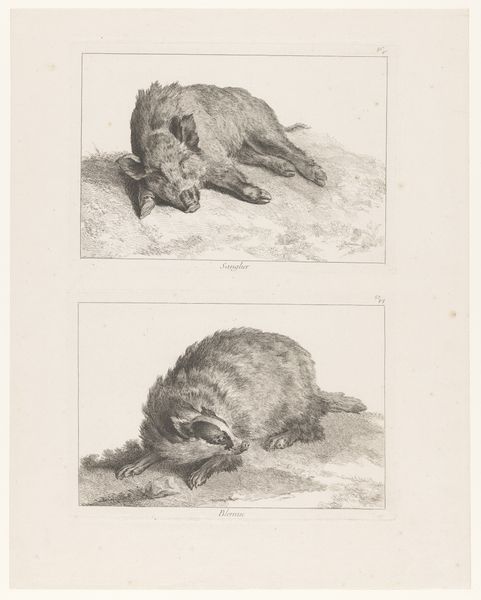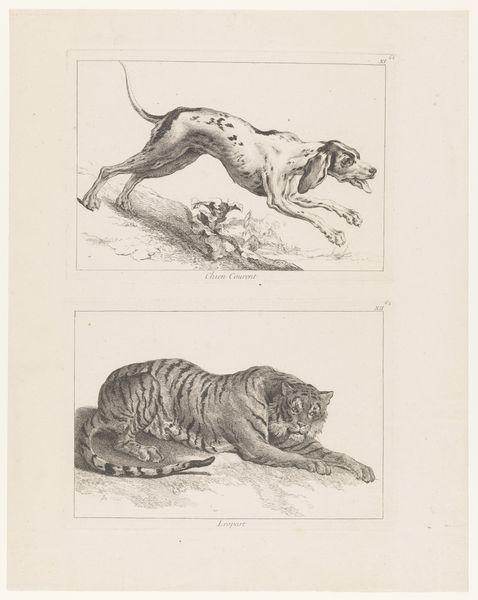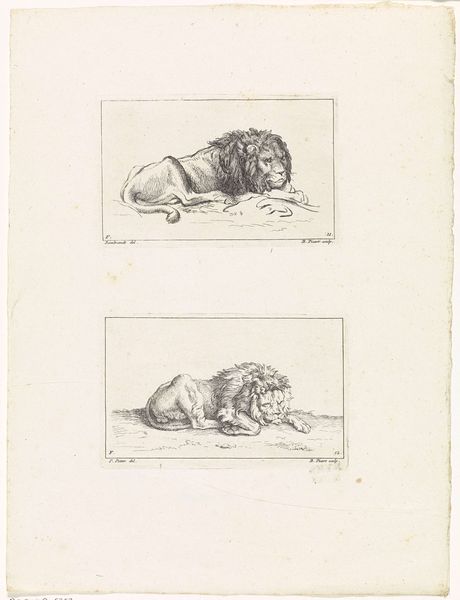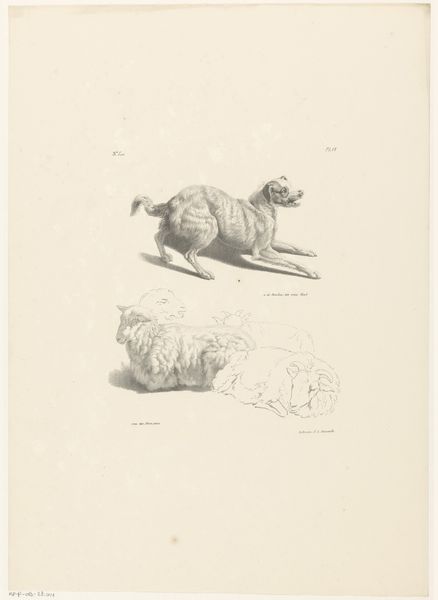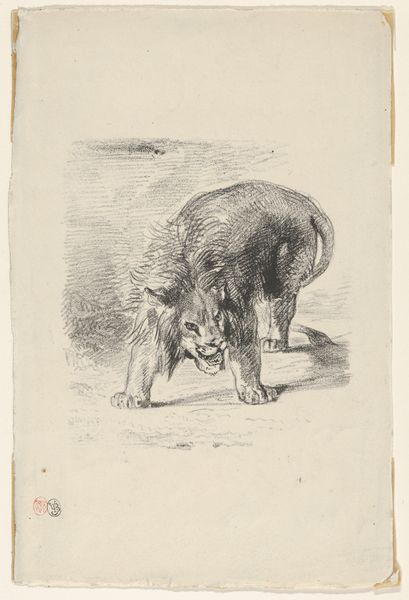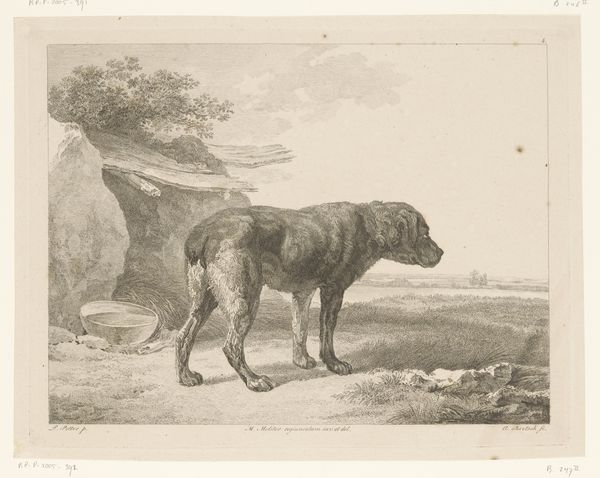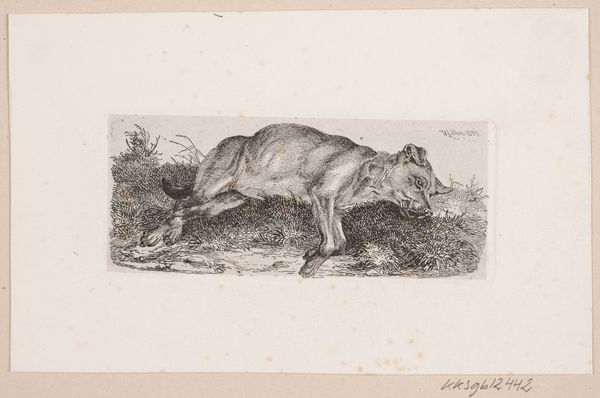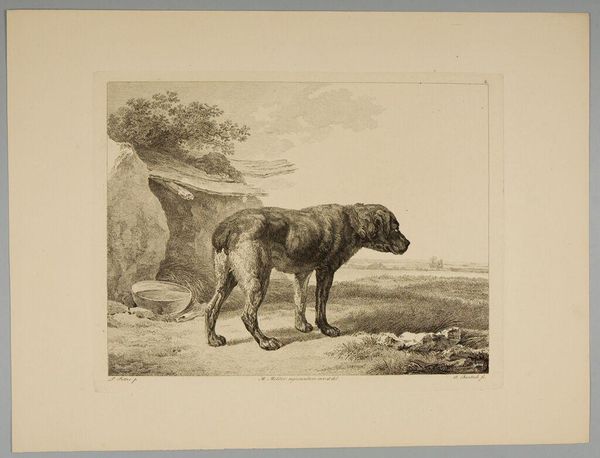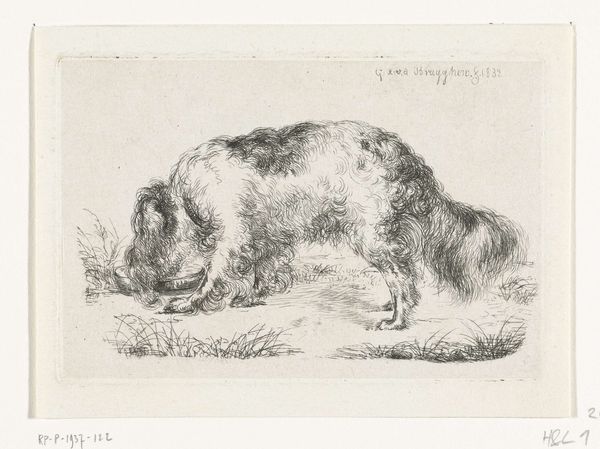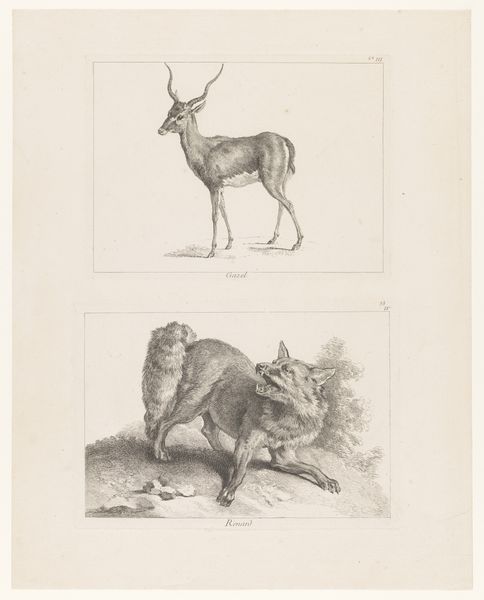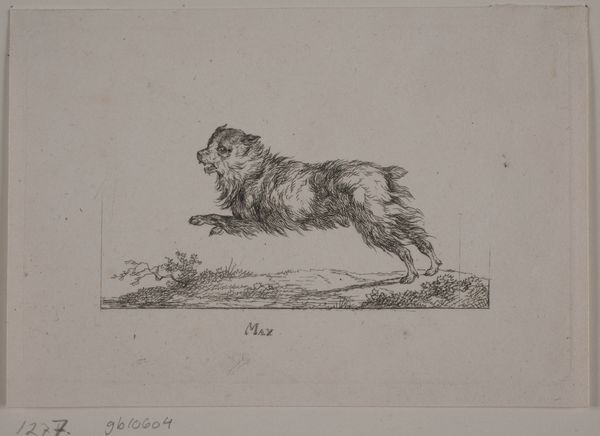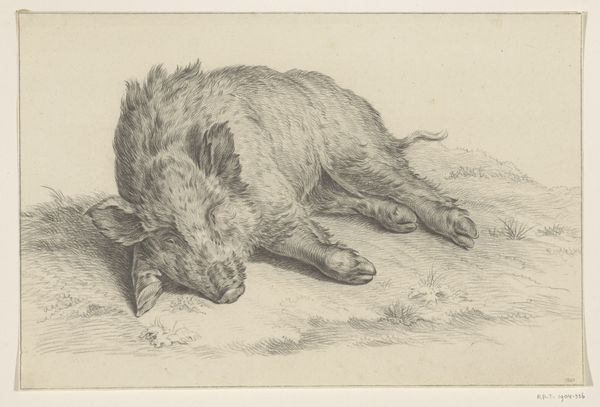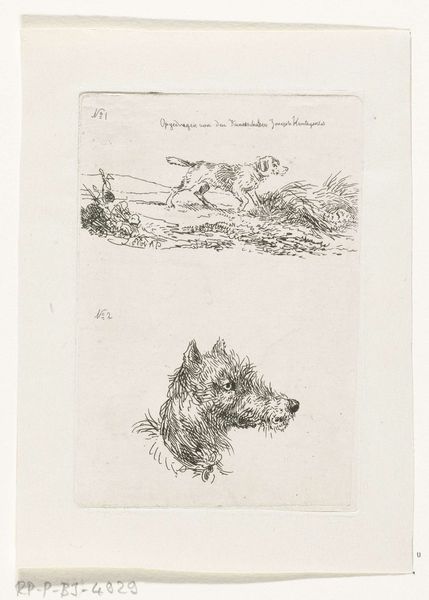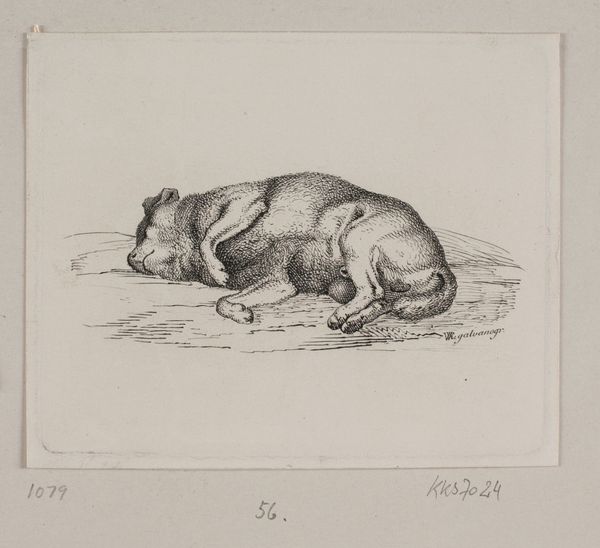
print, engraving
#
animal
# print
#
landscape
#
engraving
#
realism
Dimensions: height 225 mm, width 320 mm, height 570 mm, width 452 mm
Copyright: Rijks Museum: Open Domain
Curator: This engraving from sometime between 1740 and 1745 by Johan Eric Rehn, entitled "Blad met twee platen: lynx en everzwijn", presents us with… well, it gives us exactly that: two plates, one of a lynx, the other an everzwijn, which I believe translates to wild boar. Editor: There's a rather stoic sensibility here. That wild boar looks like he's having an existential crisis in the mud, and the lynx seems unsure if it should cough up a hairball or chase something. What were the printmaking tools used like back then, do we know? Curator: Rehn primarily employed engraving techniques, scratching away at the metal surface, line by meticulous line. Imagine the manual labor that went into depicting the texture of their fur, the weight of the boar's body! I think it’s amazing to observe that tension, the careful artifice battling the animalistic essence he’s capturing. Editor: Exactly! And think about the engraver's labor too. Each line speaks to hours spent hunched over a metal plate, pressing these images into existence. The work embedded in this "print" feels monumental. It feels so different from today's digital images—it’s a reminder that these pieces were truly crafted, imprinted by an entire social network of creation, sale and consumption, literally under pressure. It grounds the animal figures, makes them less fairytale creatures. Curator: Yes, and in the stark realism, don’t you feel that peculiar vulnerability? It goes beyond just a clinical study of animals. Rehn doesn’t quite glorify their wilderness, as he presents them so intimately to the viewer. And perhaps it mirrors his own life, that constant dance between the need for expression and the labor of production. I see that here—a meditation not only on nature, but his relationship with the whole system as an artisan, perhaps, even a commentary on society's imprint on the natural world, reflected on a plate for sale, the very tool he uses. Editor: Yes. Something as delicate and easily reproducible as an engraving embodies production, consumption, and class so viscerally. Even the relatively simple act of choosing to display these two animals on one leaf speaks to economies of space and distribution. A reflection that persists, even hundreds of years later.
Comments
No comments
Be the first to comment and join the conversation on the ultimate creative platform.
